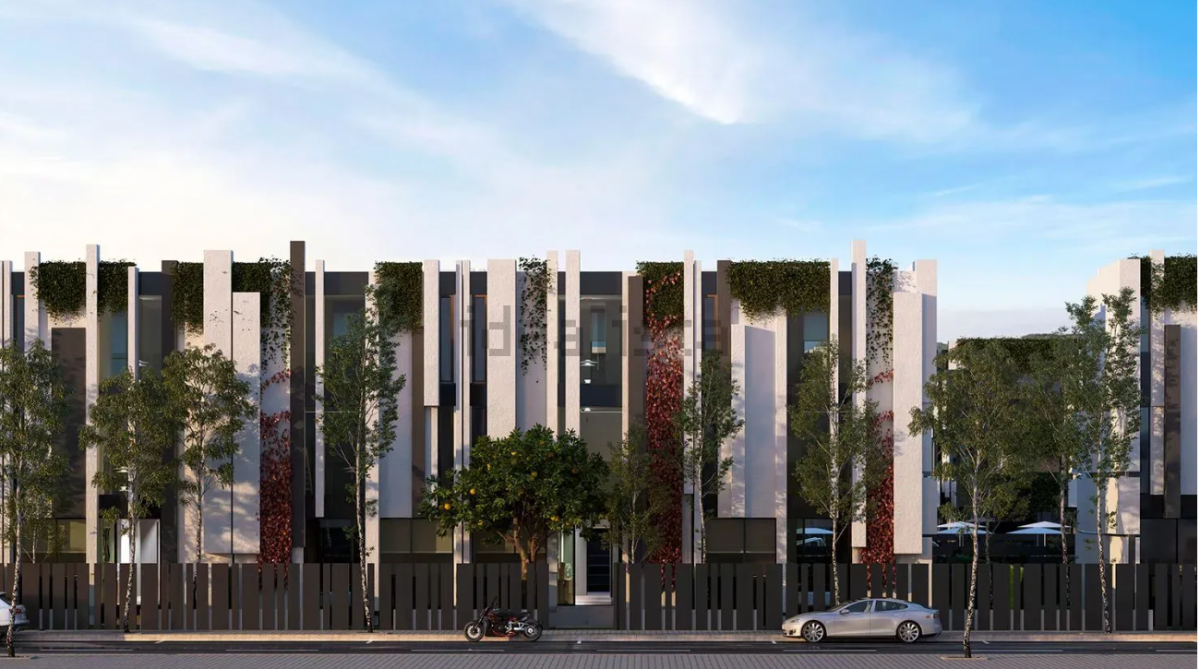
Housing prices continue to rise. The shortage of housing stock, both for sale and rent, has been pushing prices up for years, leading many potential buyers to ask: which is more expensive – a new build or a used home?
According to the 2025 New Build Housing report by Tinsa, the theoretical financial burden of purchasing new-build properties amounts to 49% of the average household’s disposable income. This figure, considered critical, is 13 percentage points higher than the overall average of 36%.
The study also found that in 2024, the average price per square metre for new builds reached €2,528, compared to €1,750 in the second-hand market – a difference of 44%.
New builds were 44% more expensive in 2024 than existing homes
Over the past year, new home prices have risen by 4.7% in real terms and by 7.6% when adjusted for inflation. In comparison, existing property prices increased by 1.2% in real terms (4% nominal).
Since the peak in 2008, the nominal price of new homes has increased by 10%. However, once inflation is accounted for, prices have fallen by 21%, reflecting a significant loss of real purchasing power in the sector.
The Tinsa report also highlights that the theoretical effort to buy a new home exceeded 35% of disposable income in every autonomous community except La Rioja. In regions such as the Balearic Islands, Andalusia, Extremadura, Madrid and Catalonia, this effort surpassed 50%, reaching alarming levels.
New-build homes are becoming increasingly expensive. Will housing prices and the effort rate continue to rise in 2025? All indications suggest so. In Q1, the proportion of household income needed to buy a home rose to 23%, according to a report by idealista. Although this remains below the effort required to rent (36%), accessing property has grown more costly due to limited supply and sustained price increases.
The purchasing effort exceeds the 30% threshold recommended by experts in four provincial capitals: Palma (41%), San Sebastián (36%), Madrid (35%) and Málaga (35%). Barcelona sits right on the threshold at 30%, while others, such as Alicante (28%), Valencia and Cádiz (25%) display more moderate levels.
Conversely, the capitals with the lowest purchasing effort are Jaén (10%), followed by Lleida, Palencia and Teruel (each at 12%).
Where are new builds most expensive?
According to the Tinsa study, the highest prices for new-build properties are found in Barcelona, San Sebastián, Madrid, Bilbao and Palma, as well as in smaller cities like Marbella and Benidorm. In capital cities, new homes cost between 13% and 59% more than existing ones, while in smaller towns, the difference ranges from 4% to 89%.
Vigo, Málaga, Alcoy, Santander, Benidorm, Vélez and Cartagena stand out for having the largest annual price increases. In real terms, new-build prices in Málaga and Benidorm are 2% above the bubble peak, while in nominal terms, they have risen by 24.4% and 19%, respectively.
Purchasing efforts exceeded 35% in nearly all towns and cities analysed by Tinsa and surpassed 65% in cities such as Barcelona, Cádiz, Málaga, Madrid, Benidorm, Marbella, Orihuela and Torrevieja.
Metropolitan areas of Madrid and Barcelona
In the Madrid area, Pozuelo de Alarcón and Alcobendas recorded the highest prices, surpassing even the capital. Parla (19.5%), Alcobendas (15.8%), Alcorcón (14.5%) and Coslada (13.5%) experienced the largest annual increases.
In Barcelona province, nowhere exceeds the capital’s average price (€4,968/m²), although Castelldefels (24.5%) and Manresa (16.2%) saw significant rises. In several towns and cities within the metropolitan area, the purchasing effort exceeds 50% of disposable income, while in the Catalan capital it surpasses 70%.
Why new-build homes are more expensive
New-build homes typically cost more than existing properties due to a mix of structural, technical and market factors.
1. Construction costs
New construction requires significant investment in materials, labour and various administrative processes. Securing permits, adhering to planning regulations and meeting current technical standards all add to the final cost. Additionally, the price of building materials has risen considerably in recent years.
2. Superior qualities and finishes
New builds feature modern finishes, premium materials and enhanced performance in thermal and acoustic insulation, durability and design.
3. Energy efficiency
New-build properties are constructed to meet stricter energy efficiency standards mandated by European regulations. This results in lower energy consumption but entails higher upfront costs for developers, which are then reflected in a higher purchase price for buyers.
4. Personalisation and custom design
One of the most valued advantages for new-build buyers is the ability to personalise certain aspects of the home. For example, in new developments, it’s common to select finishes, layouts and materials. This flexibility can, however, incur additional costs.
5. Shortage of supply
The new construction market is experiencing limited supply, particularly in established urban areas where ready-to-build land is scarce. Completing a development can take up to 20 years. This shortage, combined with sustained demand, puts upward pressure on prices.
